The Salesforce User’s Guide to Managing Business Messages
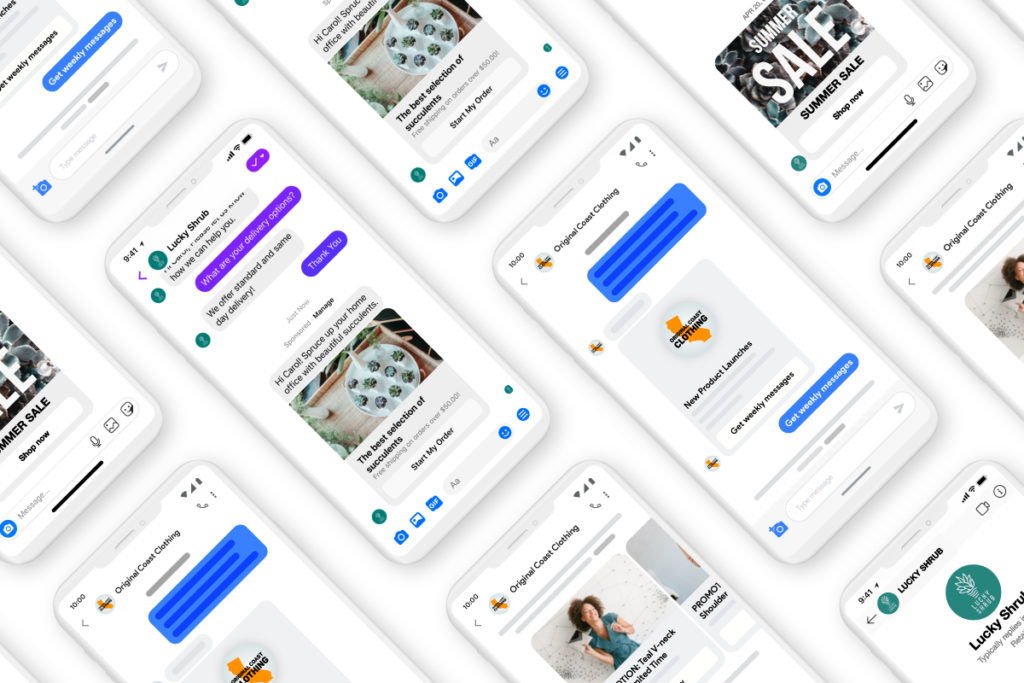
Consumer behavior is always evolving. But the events of the past couple years have accelerated that evolution.
Of course, we’ve seen a large (and well-reported) shift in where consumers browse and buy products. According to eMarketer, retail eCommerce grew a staggering 32.4% in 2020. And by 2025, eCommerce is expected to account for nearly a quarter of total retail sales.
At the same time, we’re seeing a big shift in how and where consumers want to engage with brands. Shoppers are no longer content with generic, one-size-fits-all communication. Instead, they have high expectations for personalized, on-demand experiences and engagement, wherever they are on the purchase journey. But traditional channels like phone and in-person visits to the customer service counter aren’t cutting it. Instead, a growing portion of consumers wants to be able to interact with brands through messaging.
Brands must adapt to these shifting consumer expectations – or risk losing market share.
In this guide, we’ll explore why the best brands are embracing business messaging, why Salesforce is the best place to manage these new channels, and how to get started with business messaging.
Why Winning Brands are Embracing Business Messaging
Developing great products and services is essential for any brand. But it’s no longer enough to guarantee sales growth. That’s because modern consumers also consider their experiences with a brand when making purchase decisions. In fact, per Salesforce’s State of the Connected Customer report, 80% of customers say the experiences provided by a company are as important to them as its products and services.
Experience is Everything
Investing in customer experience is well worth it. If you consistently deliver winning experiences, you’ll have happy, loyal customers who will gladly share their experiences with their family and friends. Salesforce research found that 89% of consumers are more likely to make another purchase after a positive customer service experience.
On the other hand, if you fail to deliver, you’re sure to lose prospective and existing customers. According to the Northridge Group, nearly three-quarters of consumers say they’re likely to switch to a different brand after just one bad experience.
Brands Must Adapt to Meet Shifting Consumer Preferences
Messaging apps are a popular way to keep in touch with family and friends. According to Statista, nearly 91% of internet users use them.
But increasingly, consumers also use these channels to interact with brands throughout the purchase journey, whether they’re seeking advice and recommendations or post-sale service. In fact, 89% of consumers want to connect with businesses via messaging.
Brands that support these channels are better equipped to grow sales. After all, 53% of consumers are more likely to shop with a business they can message, and 63% would switch to a company that offered messaging as a channel.
Messaging is the Ideal Channel for Meeting Growing Customer Expectations
Consumers have extremely high expectations for great service, wherever they are on the purchase journey. For starters, they expect speed. Per Salesforce research, 83% of consumers expect immediate engagement when contacting a company.
They also expect personalized, 1:1 interactions, and 79% are willing to share relevant information about themselves to get them. Small things, like using customers’ names and addressing them based on previous interactions, go a long way.
And finally, they crave person-to-person interactions. According to research from PwC, 82% of U.S. consumers want more human interactions from brands in the future.
Customer-centric brands have found that messaging is one of the most effective channels for delivering the timely, personalized, and 1:1 interactions consumers have come to expect.
Why Business Message Management Belongs in Salesforce
For many consumers, messaging has become the preferred way to interact with brands throughout the purchase journey. As such, brands must support these channels if they expect to meet shoppers’ expectations and consistently deliver great experiences.
But managing messaging channels isn’t always easy.
There are many messaging channels available, from Google’s Business Messages and WhatsApp Business Messages to Facebook Messenger and SMS – and everything in between. Brands that leverage multiple channels often manage them in silos. While channels like email, phone and live chat are managed in Salesforce, customer service agents must log into separate dashboards to manage messaging channels. At a time when caseloads are higher than ever, this isn’t exactly the best approach.

Instead, winning businesses are managing messaging channels alongside other channels within Salesforce. Customer service agents don’t have to juggle multiple platforms, which means they have more time to delight customers.
What’s more, when all channels are managed within Salesforce, brands can have a single, 360-degree view of each customer. This empowers brands to deliver personalized, seamless service and experiences across channels.
How to Get Started with Business Messaging
Messaging is gaining favor among consumers who want to connect with brands. As such, it’s important to develop a plan to start engaging with shoppers via their favorite channels. But getting started with business messaging can seem overwhelming.
While it’s tempting to dive right into the deep end, a better approach is to take a crawl-walk-run approach. Start small. Then, optimize and grow.
Here are five things you’ll need to consider when getting started with business messaging management in Salesforce.
1. Determine Messaging Channels
There are myriad messaging channels available, and as a first step, you’ll need to determine which channels to support. While it’s tempting to take on several, a better approach is to start with a couple — and then build from there.
The messaging channels you choose will depend on various factors, including shopper preferences and the bandwidth of your team, among others. But typically, the best approach is to leverage a combination of automated channels (such as a digital assistant or chatbot) and real-time tools (such as live chat).
One simple way to jump into the world of business messaging is to set up an Einstein bot. An Einstein bot is a great tool to extend the reach of your service while reducing case volume to live agents. Per Salesforce’s State of Service report, 66% of service professionals indicate self-service channels reduce case volume. And 65% of consumers prefer self-service channels for simple matters.
Of course, there will be times when more complex questions and cases require a live human. So you’ll also need to decide which channels your live agents will support.
2. Establish Rules of Engagement
Once you’ve determined your messaging channels, it’s essential to have a solid plan in place to support them. Otherwise, you’ll end up with frustrated customers.
Be sure to establish a service level agreement (SLA) for messaging. This will spell out how quickly you commit to responding to messages from your customers. The quicker the better, as many consumers expect immediate responses when they reach out to a brand.
In addition, it’s important to remember that messaging is different from other support channels. Be sure your customer service agents are trained to deliver great experiences via messaging channels.
3. Ensure Shoppers Know How to Engage in Conversations with You
Once you’ve determined which messaging channels you’ll use and have a plan in place to support them, it’s time to consider where consumers can initiate a conversation with you. One common entry point is a live chat icon that appears when a consumer visits the brand’s website.
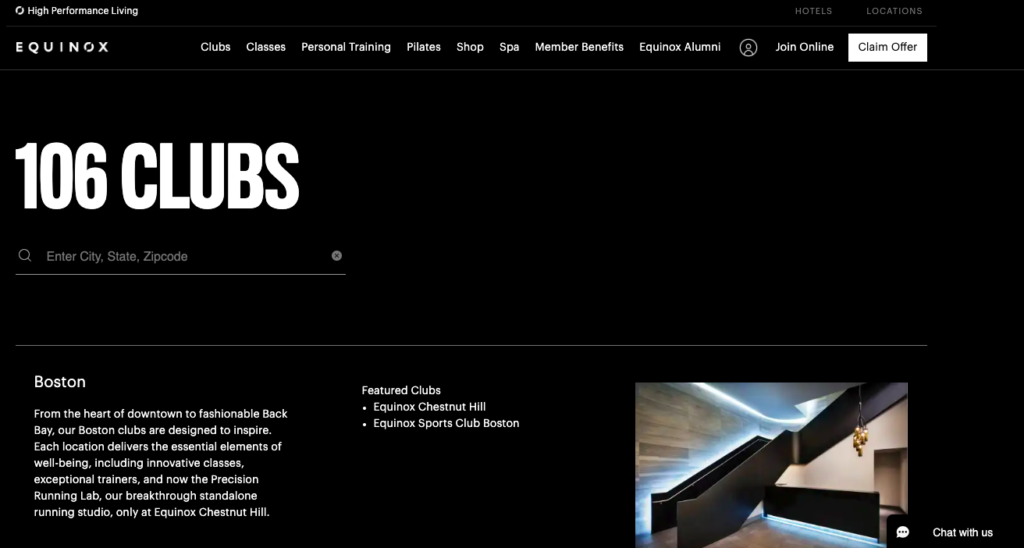
Another common entry point is the “contact us” page of the brand website, where shoppers can see which conversation channels are available to them.
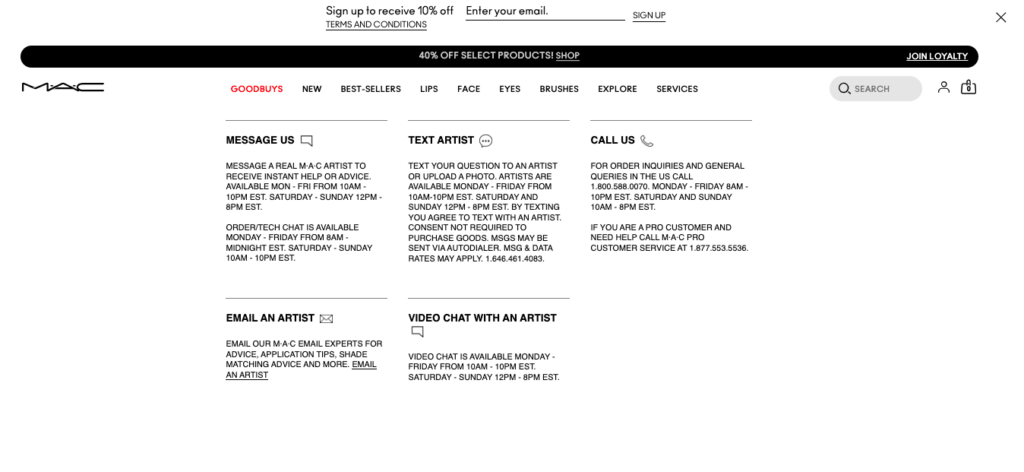
Consumers can also initiate conversations directly through Google Search and Maps, if the brand uses Google’s Business Messages.
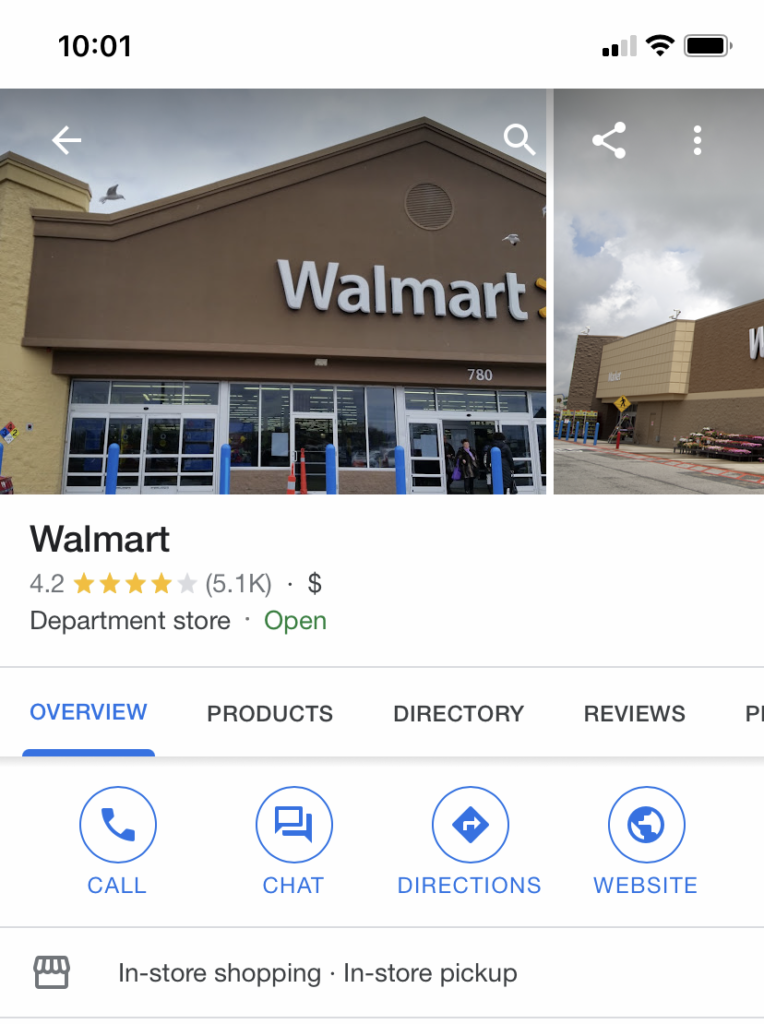
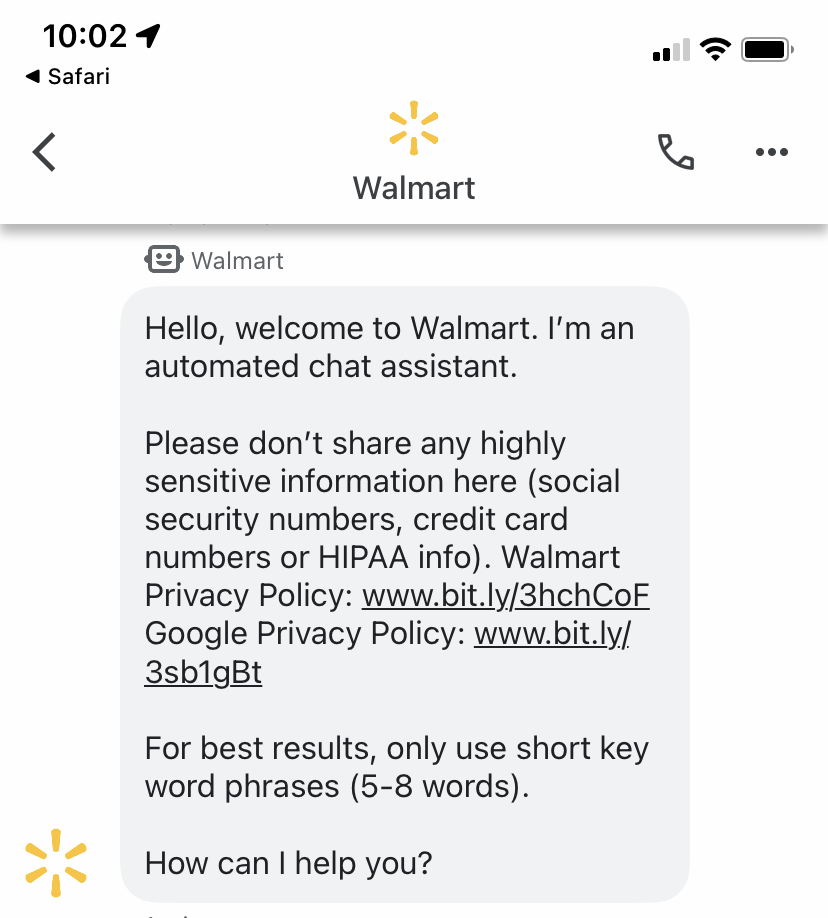
While all of the aforementioned entry points are digital, you’ll also want to think of ways to invite offline customers to engage with you via messaging. For example, a transit ad for solar energy solutions might include a QR code the consumer can scan, which launches a conversation with the brand to learn more and get personalized recommendations.
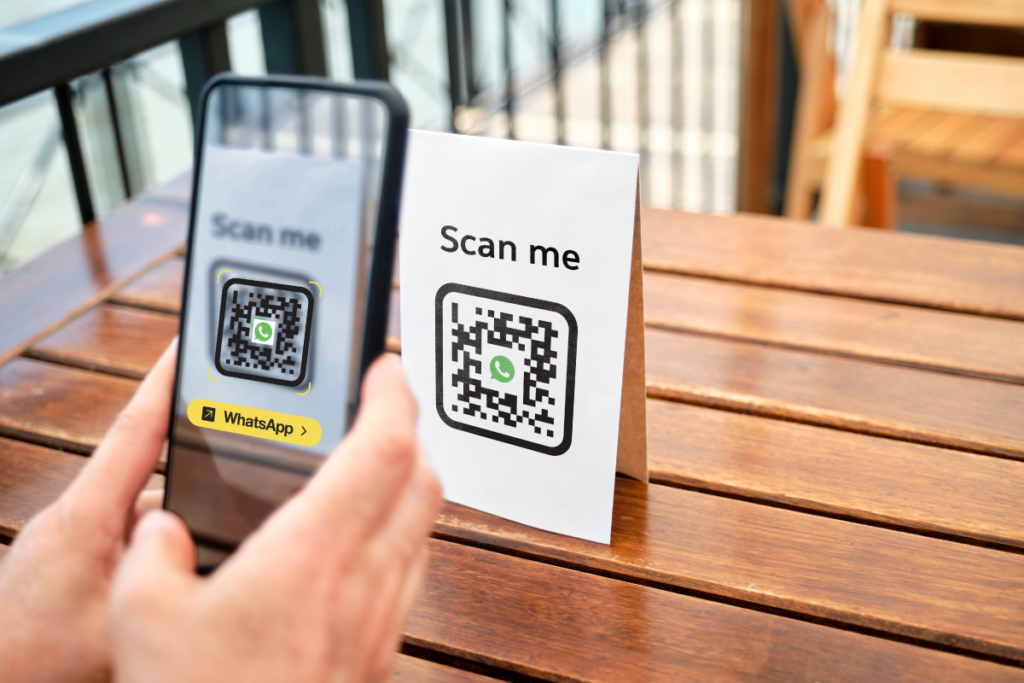
4. Get the Right Technology
If you’re already using Salesforce to manage other support channels, it makes sense to manage messaging there, too. That way, customer service agents can access everything they need from a single log-in. And, you’ll have a single, 360-degree view into each customer, which will fuel seamless, personalized experiences across channels.
With a solution like Messaging Studio from 1440, you can manage messaging channels right within the Salesforce platform, alongside your other service channels.
5. Measure and Optimize
Once you’ve launched messaging, don’t put it on autopilot. Instead, be sure to measure the performance of your program on a regular basis. That way, you can identify where things are going well and where there are opportunities for improvement. You can then use those insights to optimize your program – and improve your customers’ experiences with your brand.
Start Connecting with Customers Via Their Preferred Channels – Without Leaving Salesforce
Increasingly, consumers want to be able to engage with brands via messaging channels before, during and after a sale. Brands must adapt to meet consumers’ expectations.
But managing conversations through multiple dashboards isn’t effective. Instead, a better approach is to manage messaging channels within Salesforce – right alongside other service channels. Messaging Studio from 1440 makes this a reality. Check out Messaging Studio on the AppExchange to learn more.